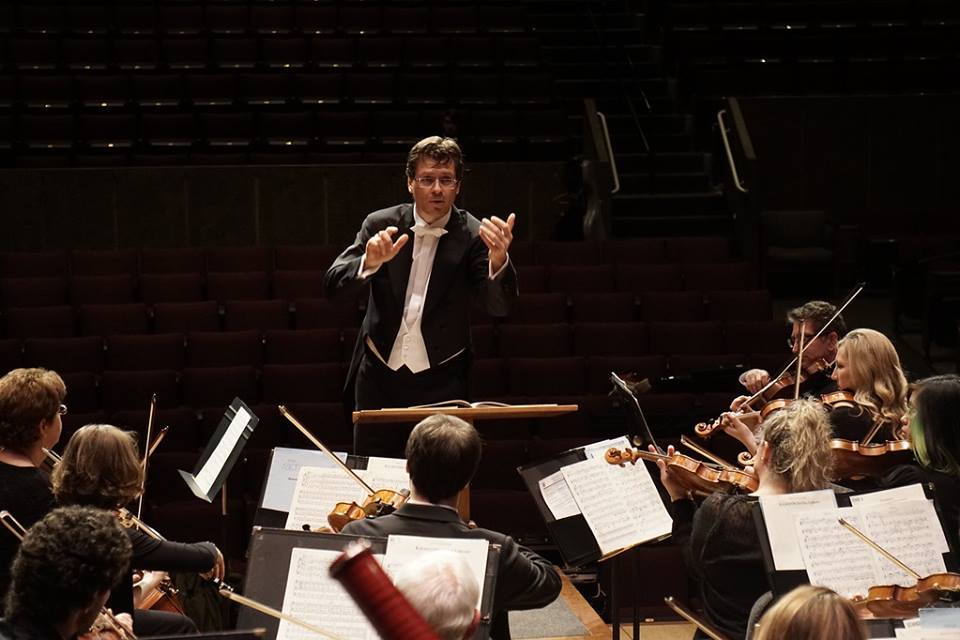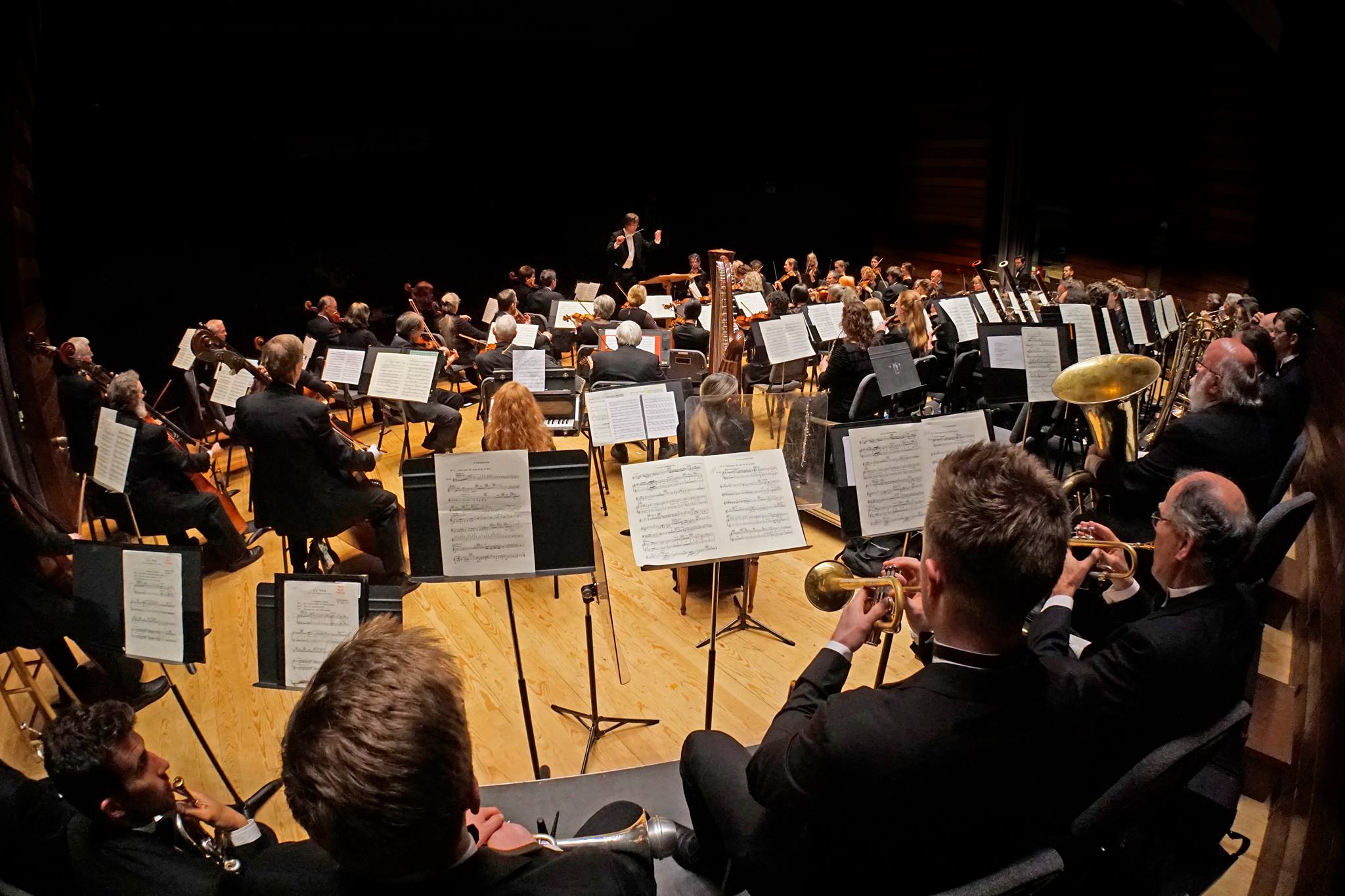By I'lana Cotton
Commissioned by the Rogue Valley Symphony for its 50th Anniversary season
Instrumentation: 22(1 dbl E horn)22 422(1 non-dbl bstrb) time 2perc strings
Duration: 16:40
Cantus score
Premiered on October 6, 2017, in Ashland, Oregon, with additional performances
on October 7 in Medford and on October 8 in Grants Pass. Here is an audio link
to the professional recording of the excellent performance in Grants Pass:
Martin Majkut conducting the Rogue Valley Symphony:

The Rogue Valley Symphony:

For those interested in watching the orchestra at work, here is a video link to a rehearsal.
PROGRAM NOTES:
Cantus is a large-scale single-movement work, which was envisioned as a complex musical telling of the stories of cosmic origins and the emergence of forms. It begins with an auditory landscape of motion and orchestral flurry which seems chaotic at first, but which gradually coalesces into harmonies, and then into motives and themes. These are rooted in a single core melody, or cantus, of 20 notes, from which the primary materials of the piece were generated. The cantus itself appears several times throughout the work, often nearly embedded in more complex tapestries, until it finally emerges as a solo song near the end of the work.
Various themes emerge which recur and are developed throughout the piece. The Call theme appears in a first sequence of powerful chordal phrases, calling the opening chaotic flurries into a section of more orderly simultaneous melodies. These melodies, including a first embedded version of the cantus, compete and interweave freely until they are eventually brought to a focal unison cadence, which becomes the ground (in the timpani) for the Spiritus theme, a single melody of long arching contours, presented in a 3-voice canon in the strings. This gives rise to an energetic section which introduces a second strong chordal theme, The Response. A middle section is comprised of two Dances, interspersed with variations of The Response. The first dance is a light heterophonic texture of solo voices with dumbek, the second has a stronger monophonic texture along with field drum and wood block. This leads to a compression of previous materials which gains tension as it merges towards an epic arrival point, which states The Response for the final time, followed by a renewal of The Call. The denouement reveals the cantus as it is finally presented with its original counterpoints, then as an expressive melody sung by solo oboe. A final Call ushers in a hint of new cycles.
I'lana Cotton, 6-26-17
I'LANA'S WEBSITE: notimemusic.com